Physical Address
304 North Cardinal St.
Dorchester Center, MA 02124
Physical Address
304 North Cardinal St.
Dorchester Center, MA 02124
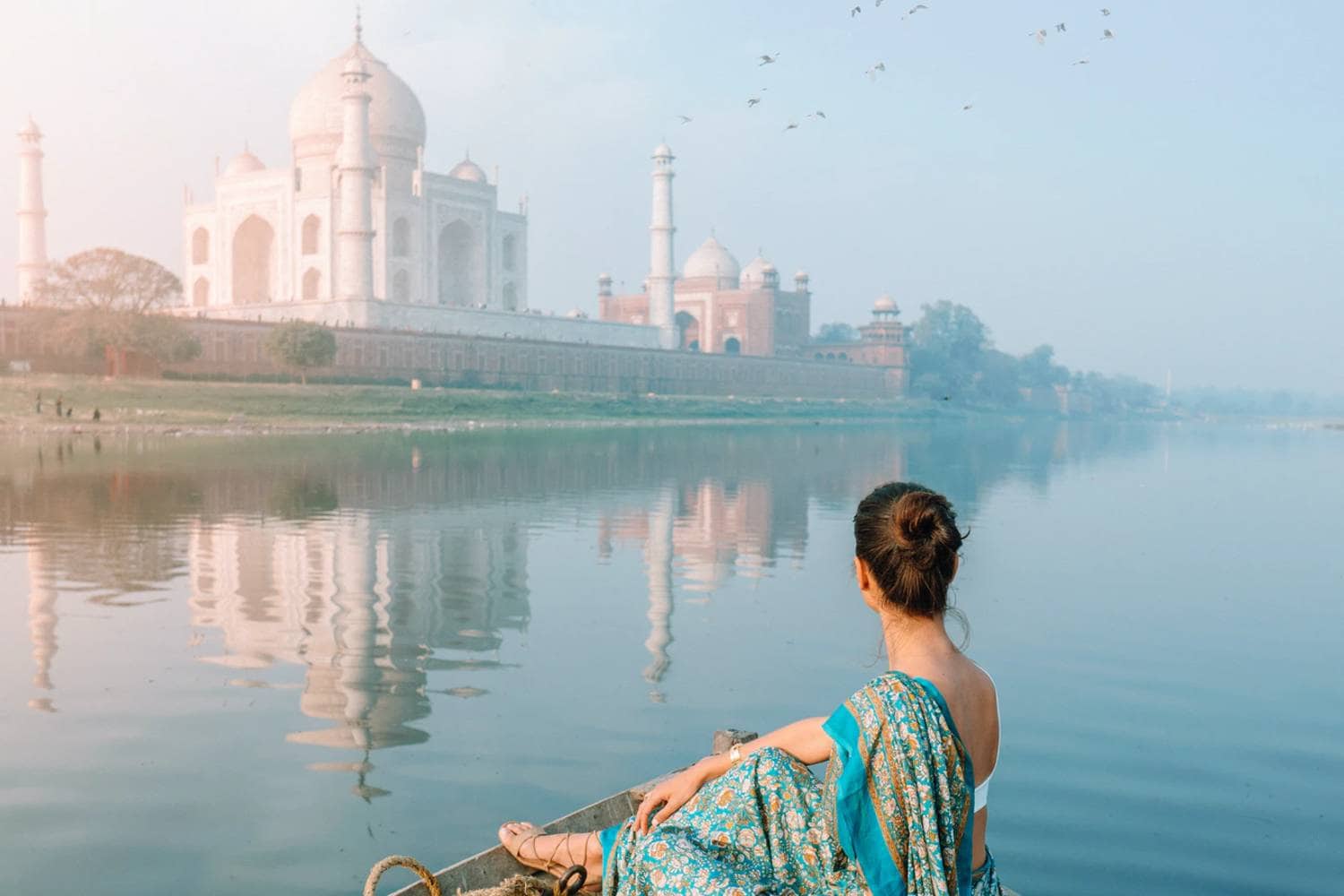
India is indeed a country with breathtaking beauty. It is home to numerous natural and man-made wonders, including iconic landmarks like the Taj Mahal and the Red Fort.
People worldwide visit India to explore its rich history, experience its diverse culture, marvel at ancient monuments, and appreciate its architectural wonders.
Monuments of India are not just historical buildings or sculptures; they also represent an era when people were still discovering themselves while defining their future through artistry.
From north to south, east and west, you can find many different kinds of buildings. Each region has mosques, forts, museums, mausoleums, and more.
The historical monuments in India are a significant part of Indian culture. They can also be an important tourist attraction.
This article aims to overview some such historical sites in India and their significance.
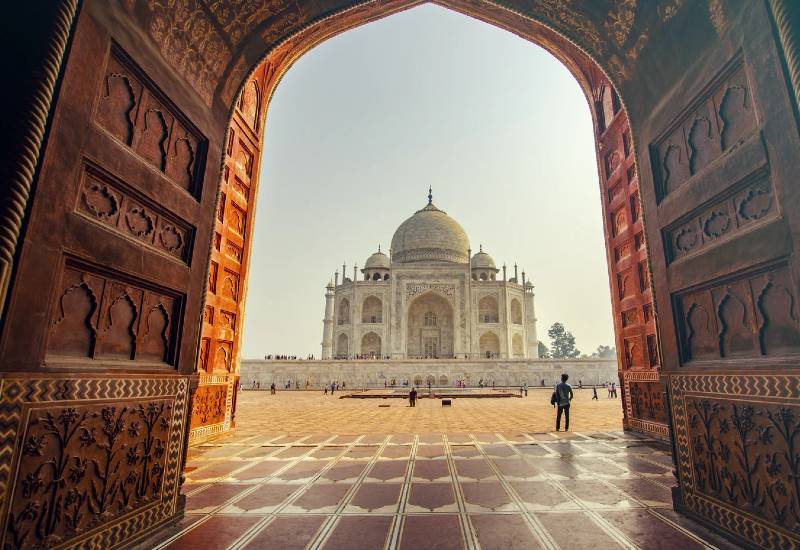
The Taj Mahal is located in Agra, Uttar Pradesh and is a UNESCO World Heritage Site. It is a popular historical destination that should be visited. It is a prime example of Mughal architecture made of white marble. Shah Jahan constructed it for his beloved wife, Mumtaz Mahal. Its beauty and precise proportions enchant visitors. The construction of this magnificent monument took 22 years to finish.
Timings:6:00 AM – 6:30 PM (closed on Friday).
Best thing: The night-time shows at the Taj Mahal are popular among visitors and provide a unique perspective to appreciate its beauty.
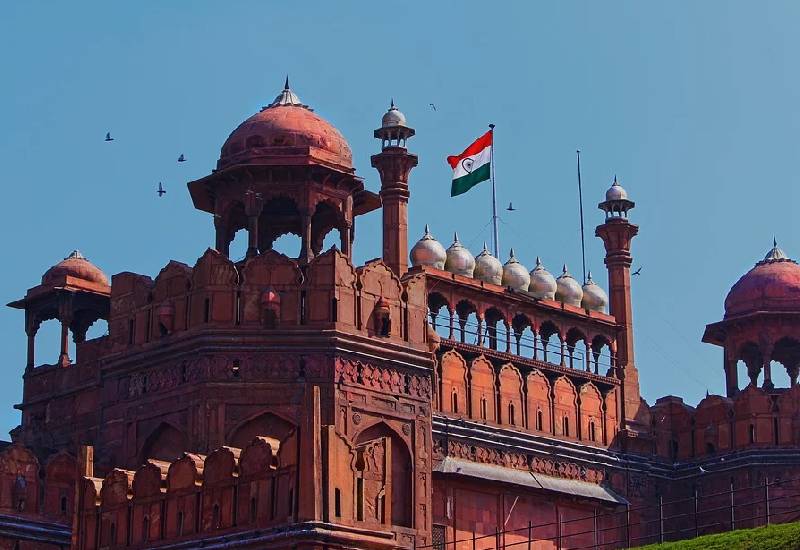
The Red Fort is a UNESCO World Heritage Site known for its size and aesthetics. It took ten years to construct, from 1638 to 1648. The Mughal emperor, Shah Jahan, chose the fort as his residence when he shifted his capital from Agra to Delhi. Originally called the Qila-e-Mubarak, the octagonal fort is made of red sandstone and is located in the bustling area of Old Delhi. It attracts a large number of visitors daily.
Interesting Fact About Red Fort: The construction took 10 years to complete because of the project’s complexity and scale. Initially, the fort was not red but white, reflecting its limestone facade. However, the British painted the fort red as the limestone sections deteriorated and fell off.
Timings. 9:30 AM – 4:30 PM (closed on Mondays)
Best Thing: The Palace of Colors, also known as the Rang Mahal, was where the emperor’s wives, mistresses, and maids resided. It was one of the main attractions of the area.
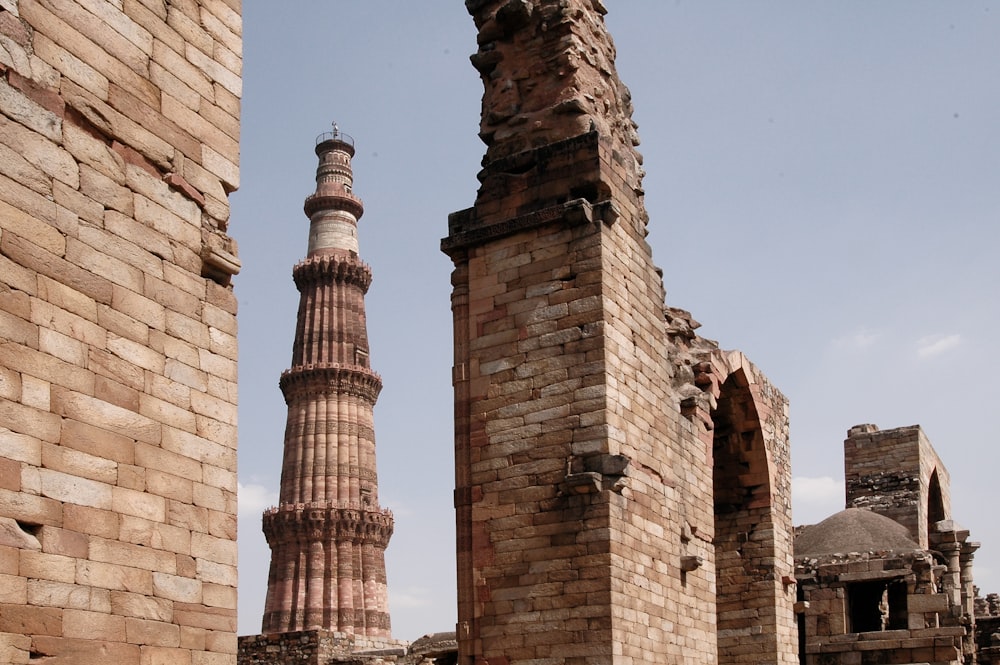
Qutub Minar is a UNESCO World Heritage Site and a popular historical attraction in Delhi. Qutb-ud-din Aibak built it and represented the first Muslim kingdom in India. This tall ancient tower stands at approximately 240ft, making it one of the tallest of its kind in the world. The architecture of Qutub Minar showcases the blend of Indo-Muslim styles and features red sandstone stories decorated with Arabic verses from the Quran. It is a remarkable monument that reflects India’s rich history and cultural heritage.
Interesting Fact About Qutub Minar: The Qutub Minar complex is known for housing an iron pillar that has remained rust-free, even after 2000 years.
Timings. 7:00 AM – 5:00 PM
What you should see. The Qutub Minar in India is known for its special attractions, including the Decorative Light Show held every evening and the Qutub Minar Festival held in October/November. These events add to the overall experience and make visiting the Qutub Minar more enjoyable.

Agra Fort is an incredible historical site in India. It was designated as a World Heritage Site by UNESCO in 1983. The fort showcases the Mughal style of architecture and has a semicircular shape with double battlemented walls made of red sandstone. Interestingly, the Red Fort in Delhi, built by Shah Jahan, was influenced by Agra Fort. You will find magnificent rooms, beautiful halls, and stunning mosques inside the fort. It is said that the fort originally had over 5000 structures and monuments, but only a few have survived over time.
The Agra Fort was initially constructed by the Chauhan Rajputs using bricks. However, Akbar later rebuilt it using red sandstone for its exteriors. Akbar demolished several structures inside the fort and replaced them with palaces and mosques made of white marble, which are still visible today.
Timings: 6.00 AM – 6.00 PM
What you should see: Experience the captivating sound and light show at Agra Fort. Immerse yourself in a visual journey through its rich and illustrious history.
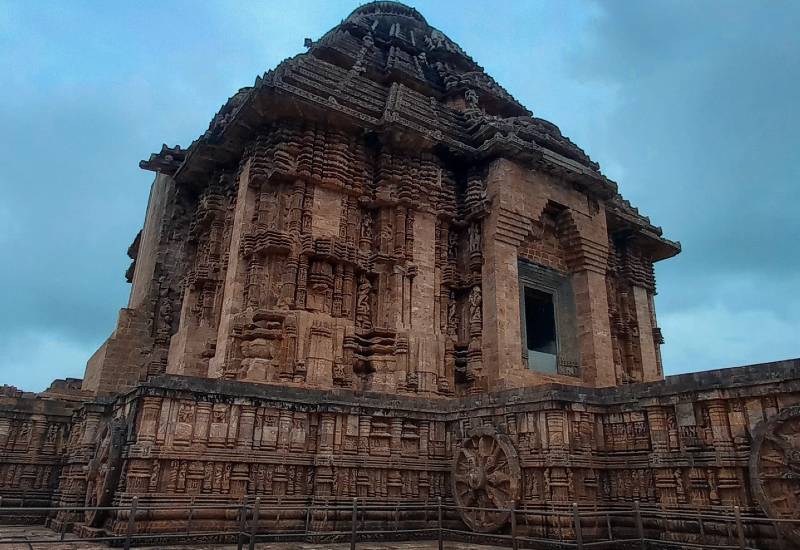
The Konark Sun Temple in Odisha is a UNESCO World Heritage Site. It was built during the reign of King Narasimhadeva I, a glorious ruler of the Ganga dynasty. Situated on the Bay of Bengal coast, the temple displays stunning ancient architecture. A notable feature is the entrance, where two lions are seen crushing elephants, with a human body lying at their feet. Some scholars refer to the temple as the “Black Pagoda.”
The temple has 12 wheels at its base. These wheels are sundials that can accurately tell the time.
Timings:10:00 AM – 5:00 PM (closed on Fridays).
Best Thing: Take a moment to observe the three statues of the sun gods. They are positioned so the sun’s rays hit them at dawn, noon, and sunset.
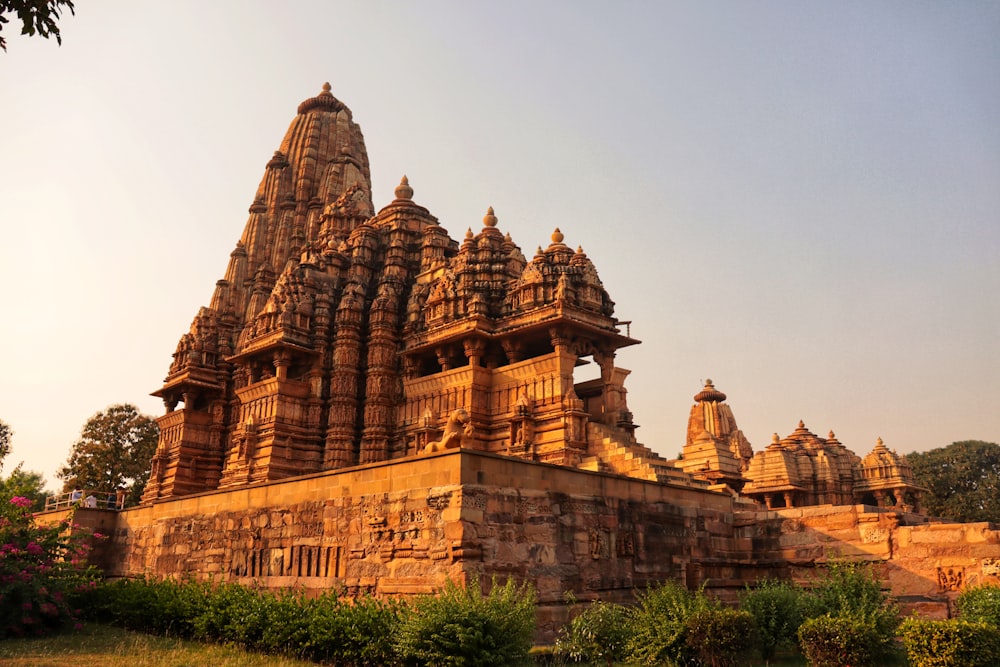
The Khajuraho Temples are located in the town of Khajuraho in Madhya Pradesh. They are a UNESCO World Heritage Site known for their unique structures. These temples depict the powerful emotions of eroticism and sensuality. The Chandel rulers built them, a combination of Hindu and Jain temples. The statues and sculptures in these temples are intricately carved and reflect the traditional Hindu values of Dharma, Artha, Kama, and Moksha.
Interesting Fact about Khajuraho Temples: Khajuraho got its name because it had many date palms and was called Khajura, meaning date. Back in ancient times, the city was also called Khajjurpura.
Timings. 8:00 AM – 6:00 PM
Best Thing: The Khajuraho Temples offer a captivating sound and light show. This show portrays the challenges faced by the Chandela dynasty. It is a must-see attraction for travellers.
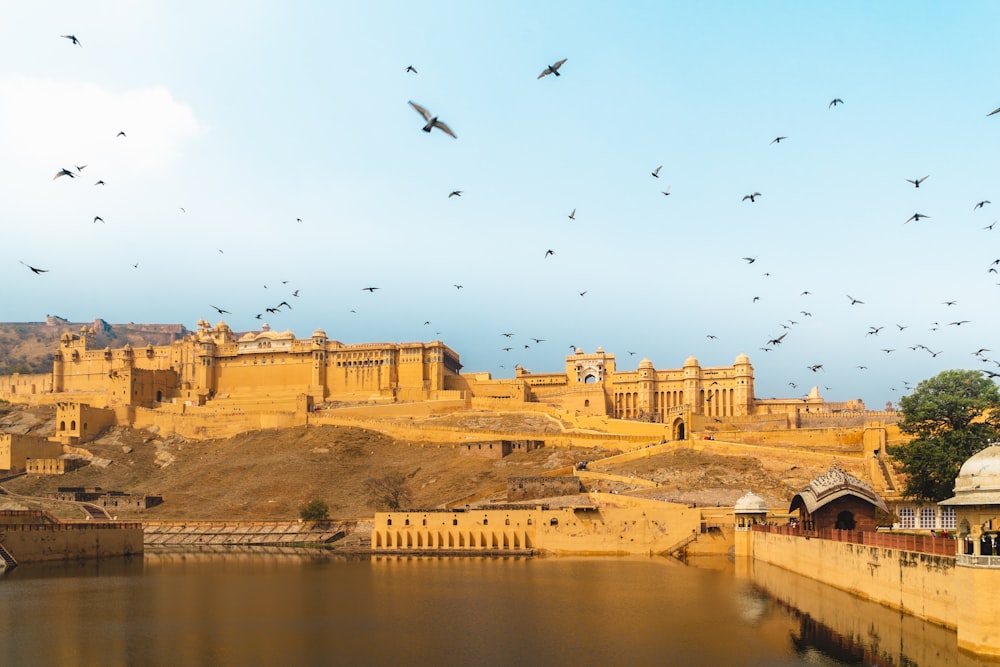
Amer Fort is a must-visit tourist spot in Jaipur, known for its stunning architecture. Built-in 1592 by Raja Man Singh, it offers a glimpse into the lives of Rajput kings. The fort’s Hindu architecture is truly exquisite. It is even recognized as a UNESCO World Heritage Site. With its grandeur, palaces, scenic views, and royal atmosphere, Amer Fort is a top choice for history enthusiasts.
Amer Fort has a secret passage in its basement. This passage leads to a 2 km tunnel that connects Amer Fort to the Cheel ka Teela, also known as the Hill of Eagles, in the Aravalli range.
Timings: 8.00 AM – 5.30 PM
Best Thing: Experience the tales of Rajput Kings at the Sound and Light show. Enjoy dance performances at Sukh Mahal. Take in the breathtaking views on an elephant ride to Amer Fort. Be entertained by captivating puppet shows.

The Gateway of India is a famous historical place in Mumbai. It dates back to 1924 and served as an access point during the British period. The monument was built to commemorate the visit of King George V and Queen Mary in 1911. However, it wasn’t completed until 1924. This iconic structure also holds significance in India’s history as it was the departure point for British troops in 1948 after India gained independence. In the 20th century, the last British ships set sail for England from the Gateway of India.
Timings. 24 Hours Open
What you should see. You can take trips to Elephanta Island through the gateway. There are steps that lead to the island.
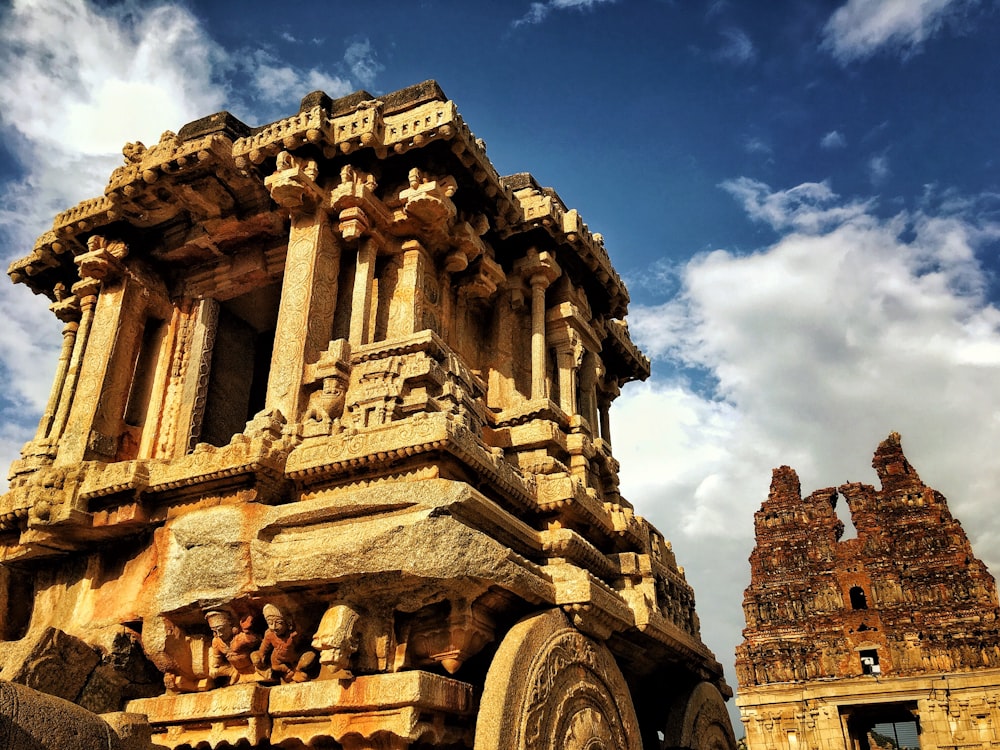
Hampi is a UNESCO World Heritage Site that showcases the glory of the Vijaynagara Empire. When you visit Hampi, you’ll see stunning examples of architecture and aesthetics. One of these is the Virupaksha Temple, which features a beautifully carved stone statue of Lord Shiva. Other must-see attractions include the Queen’s Bath, Elephant Stables, Vijay Vittala Temple, and Hampi Bazaar.
Timings. 10:00 AM – 5:00 PM (closed on Fridays).

The Lotus Temple, a Bahá’í House of Worship in Delhi, is often referred to as one of India’s most spectacular and unique buildings.
The temple was designed by Persian architect Fariborz Sahba who drew inspiration from flowers like lotuses and roses.
It also has 27 petals representing Baha’u’llah’s message that all religions should unite on earth for peace, with 27 being the number of letters in the Arabic alphabet used to write various languages such as English, Hindi etc.
This beautiful temple can accommodate over 2500 visitors and houses around 1000 pieces of art, including paintings, sculptures and tapestries.

Jaisalmer Fort is a renowned historical site in India and is considered one of the oldest continuously inhabited forts in the world. UNESCO designated it a World Heritage site in 2013 due to its impressive history and magnificent architecture. The fort has witnessed numerous battles with rulers, including the Mughals, Tughlaqs, Khiljis, and Rathore Kings. In 1294, the first Jauhar of Jaisalmer occurred when Allauddin Khilji invaded the city and laid siege for almost eight years. The fort is home to about 1/4th of Jaisalmer’s population.
Timings: 9.00 AM – 6.00 PM
What you should see: Discover the grand palaces, houses, ancient temples, wells, majestic Havelis, and other structures within the magnificent Jaisalmer Fort.

Sanchi Stupa is an ancient Buddhist temple. It stands atop a hill in a small town called Sanchi, India. This place is most well-known as Great Stupa. This is one of the oldest stone Buddhist monuments in India.
Sanchi has been protecting these beautiful and essential architectural wonders. These wonders have been protecting the ancient history and art of the Mauryan period.
The many buildings, temples, and Ashoka Pillar have wowed people worldwide. UNESCO has given us the status of a World Heritage Site because of the Mahastupa.
Sanchi is an important Buddhist site. You can feel the awe you felt when you were little and listen to stories about Ashoka. There are also other hidden Buddhist sites within 30km of Sanchi where people learn about Buddhism.

Visiting the Hawa Mahal in Jaipur is essential for a complete tour. The Hawa Mahal, also known as the Palace of Winds, was designed by Lal Chand Ustad. It served as a gallery for the ladies of the royal household to observe street life while adhering to the purdah. Constructed with red and pink sandstone, it has a crown-like shape, reflecting the devotion of Maharaja Sawai Pratap Singh, the ruler of Jaipur at that time, to Lord Krishna.
The Hawa Mahal has 5 stories and an angle of 87 degrees, making it the tallest building in the world without a proper foundation.
Timings. 9:30 AM – 4:30 PM
What you should see. Be sure to notice the detailed lattice work on the small windows.
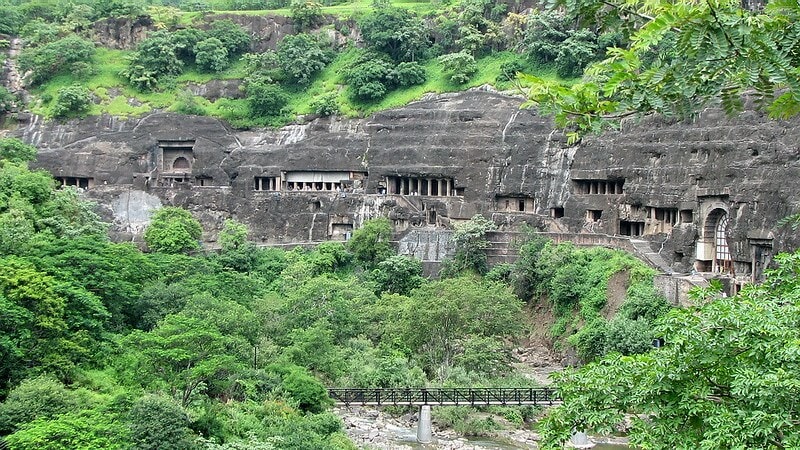
The Ajanta & Ellora Caves in Aurangabad are UNESCO World Heritage Sites. They showcase exceptional craftsmanship and are a fascinating historical site in India. Each rock carving was done by hand, showcasing intricate design and artwork. British officer John Smith accidentally discovered the caves. There are 29 caves representing Hinduism, Jainism, and Buddhism. Ellora has 34 caves – 12 Buddhist, 17 Hindu, and 5 Jain.
According to historical accounts, Buddhist monks would engage in carving activities within the Ajanta caves during the monsoon season, as they chose not to venture outdoors.
Timings. 9:00 AM – 5:30 PM (Ajanta caves are closed on Mondays & Ellora caves are closed on Tuesdays).
What you should see. Cave 26 in Ajanta is the most grand and exquisite work. It houses the Chaitya hall with a stupa. Ellora has a special attraction called the “Cavern of the Ten Avatars”. It is a landmark dating back to the reign of Krishna I.

Built in 1591, Charminar is the heart of Hyderabad. The fifth ruler of the Qutb Shahi dynasty built the landmark. Charminar, a famous monument and mosque, is a model that celebrates the influence of Muslim Turkomans in India.
One of the top ten monuments of India, this is about the structure and its history. People believe the four minarets symbolise Islam’s first four Khalifas.
Each minaret is four stories tall, and the floors are divided by beautifully carved rings around it. The mosque is on the top floor, and people can enjoy a short climb of 149 steps to get there.
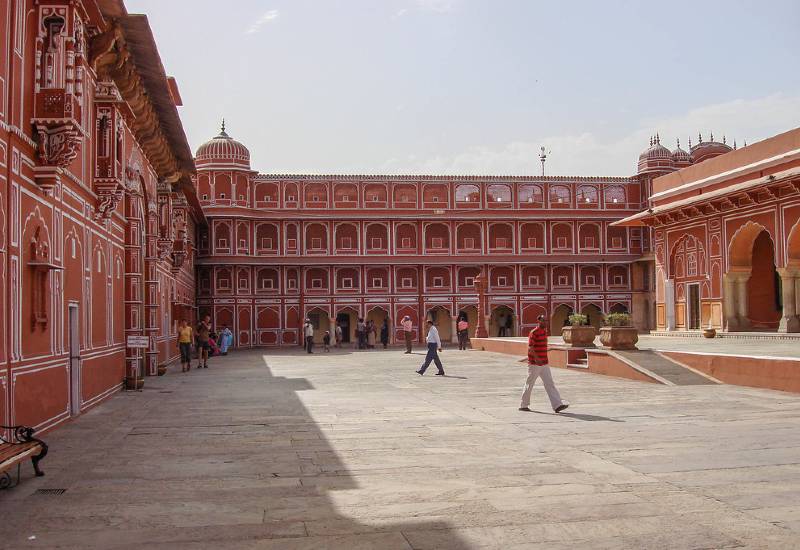
India is known for its various cultures and rich architecture, decorated with monuments like palaces, temples, and churches. Jaipur City is one of them that takes you back in time to the Rajput era.
The city has many impressive buildings, so it attracts tourists all year. One such architectural delight is the City Palace in Jaipur, symbolising the city’s royal and regal days.
When you go into a palace, the beauty of the inside is impressive. You can see stunning details and look at all kinds of exciting things.
The City Palace used to be where the royal family of Jaipur lived. Later, it was divided into two parts – one with museums and courtyards and the other where the royal family still lives.
Sawai Jai Singh, a Rajput from the Kachwaha clan, built the city Palace. He helped found the city of Jaipur.

If you love ancient architecture, Mysore Palace is a must-visit historical site in India. It showcases the beautiful Indo-Saracenic style and is a grand building in Karnataka. Also known as Amba Vilas Palace, it was once the home of the royal family of Mysore and still is. This palace is one of the largest in India and features a stunning blend of Hindu, Muslim, Rajput, and Gothic designs, giving it a majestic feel. Mysore Palace is India’s second most popular tourist spot after the Taj Mahal.
Timings: 10.00 AM – 5.30 PM (Closed on Fridays)
What you should see: Experience the vibrant Dussehra celebrations and witness the mesmerizing light and sound show at Mysore Palace.

An Indian church known for its exemplary baroque architecture is the Basilica of Bom Jesus Church in Goa. The Basilica of Bom Jesus Church is one of the only churches in India with admirable baroque architecture.
This church was built in 1594 and consecrated in 1605. Christianity came to India at this time. The church is in Bainguinim, about 10 km from Panjim The Basilica of Bom Jesus is recognized as a World Heritage Site by UNESCO. This church was not plastered outside, so it hasn’t been changed over time.
The church’s facade is delicately carved with pillars inscribed with the initials ‘IHS’, an abbreviation for the Jesuit emblem meaning Jesus, Saviour of Men.
The floor of the Basilica is a marble mosaic with precious stones, giving it a solemn appearance. The Basilica of Bom Jesus is a structure built 408 years ago and is open daily to the public.
Fatehpur Sikri, located 40km west of Agra, was once the capital of the Mughal emperor Akbar. Unfortunately, it was abandoned due to water supply issues and other problems. Exploring this royal city allows you to see courtyards, audience halls, and pavilions that showcase the artistic brilliance of the Mughal Empire. Fun fact: Women hoping to conceive would visit the tomb of Sufi saint Salim Chisti to seek blessings.
Timings. 9:00 AM – 5:00 PM
What you should see. Inside Fatehpur Sikri, there are two major attractions: Diwan-i-Aam and Diwan-i-Khas. The emperor used these buildings to hold audiences with the common people and the royals.
The Mahabodhi Temple is where Gautam Buddha is said to have attained enlightenment. He meditated under a fig tree, now represented by the Bodhi tree near the temple. The temple was built during Asoka’s rule in the 3rd century BC. Inside is a massive Buddha statue with his right hand touching the earth.
The Bodhimanda is the spot under the Bodhi tree where Gautam Buddha achieved enlightenment. Legend has it that this spot will be the last to disappear when the world ends and the first to reappear when the world is recreated.
Timings. 5:00 AM – 9:00 PM
What you should see. The Jewel Walk is a popular attraction for travellers. It is said that Lord Buddha once walked along this path for seven days during a meditation after achieving enlightenment.
The Victoria Memorial in West Bengal is considered one of the finest examples of British architecture. Lord Curzon, the then Viceroy, came up with the idea for this monument. Sir William Emerson was responsible for its design and implementation. The premises of the Victoria Memorial include a lovely garden and a museum showcasing British memorabilia such as sculptures, paintings, weapons, and artefacts.
One notable painting is by the renowned Russian artist Vasili Verestchagin, depicting the Prince of Wales in Jaipur in 1876. The monument features two intriguing inscriptions: VRI, which stands for Victoria Regina Imperatrix (Victoria Queen and Empress), and Dieu Et Mon Droit (God and my right).
Timings. 5:30 AM – 6:15 PM
What you should see. At the top of the memorial’s dome is a black bronze statue called the “Angel of Victory”. It is a special attraction for visitors. It also functions as a weathercock on clear days, adding uniqueness.
The Charminar is a famous and fascinating structure in Hyderabad. According to a popular tale, it was built in 1591 by Muhammad Quli Qutb Shah to honour a divine being. However, historical records suggest that it represents the end of a plague in the city. There is a legend about a secret tunnel connecting the Charminar to the Golconda fort, but no evidence of its existence has been found. An interesting detail is that a cat’s head can be seen on one of the arches, serving as a deterrent to rats that once caused trouble in Hyderabad.
Timings. 9:30 AM -5:30 PM
What you should see. There is a fascinating bazaar called Laad Bazaar. It is a great place to buy unique artefacts. Additionally, there are numerous food stalls where you can try delicious local cuisine.
Jallianwala Bagh is a site near the Golden Temple in Amritsar that witnessed a horrific incident in Indian history. On April 13, 1919, British troops fired upon unarmed protestors, resulting in the Amritsar Massacre. People tried to escape the bullets by jumping into a well and a stampede ensued, causing many deaths. This event was a significant turning point in India’s struggle for independence. The walls of Jallianwala Bagh still bear the marks of the bullets, and a light and sound show tells the painful story.
Timings. 6:30 AM – 7:30 PM
What you should see. You should visit the Martyr’s Well. The wall there still shows the bullet marks.
The Group of Monuments at Mahabalipuram, also known as Mamallapuram, is a UNESCO World Heritage Site. It’s a must-visit historical site in Tamil Nadu that showcases the incredible stone carvings of Pallava art. These temples took 12 years to build and are located on both sides of the hill at Mahabalipuram. They have a unique style, combining Dravidian and Buddhist architectural elements. The main attractions are the Shore Temple, Arjuna’s Penance, and the Cave Temples. One particularly beautiful carving is the “Descent of the Ganges,” which tells the story of Lord Shiva bringing the Ganges from heaven to Earth.
Timings. 6:00 AM to 6:00 PM
What you should see. The temples at Mahabalipuram are known for hosting dance festivals. One of these festivals is the Mamallapuram Dance Festival. It takes place every year in December and January.
If you love exploring ancient monuments, you must visit Gwalior Fort. It is an architectural marvel from the 8th century and is considered one of the most beautiful fortresses in India. Located in Madhya Pradesh, it is a popular tourist destination. The fort’s walls exude the energy of the past and immediately capture your attention. It is a source of local pride and a place of worship and wonder for tourists worldwide. Interestingly, the second oldest record of the number “zero” was found in one of the fort’s temples.
Timings: 8.00 AM – 6.00 PM
What you should see: Come and see the beautiful Hindu and Islamic architecture at the monuments and temples inside the fort.
Old Fort, also known as Purana Qila, is a popular tourist spot in Delhi. It is named after the Mughal Emperor Sher Shah Suri, who began its construction. The fort has a history of 2,500 years, and excavations have revealed artifacts from the pre-Mauryan era. The gates and bastions of the fort are a major attraction, showcasing impressive architecture. The blend of Rajasthani and Mughal architecture gives the fort a unique heritage charm. Inside the fort is a 16th-century building called Sher Mandal, an astronomical library built by Emperor Babur for his son Humayun’s interest in stargazing.
Timings: 10.00 AM – 5.00 PM
What you should see: Experience the sound and light show at Purana Qila or Old Fort, known as Ishq-e-Dilli. This captivating show brings the Indraprastha mythology from the Indian epic Mahabharata to life. Don’t miss this opportunity to immerse yourself in Delhi’s rich history and culture.
Mattancherry Palace, also known as the Dutch Palace, is a remarkable example of Kerala architecture with influences from the colonial period. It is renowned for its expansive halls and stunning design. Visitors can admire the Pazhayannur Bhagavathy deity inside the palace, which the royal family worshipped. The palace is adorned with exquisite murals depicting epic stories like the Ramayana and Mahabharata and beautiful depictions of Hindu Gods such as Lord Krishna. Additionally, the palace showcases life-size portraits of the Kings of Cochin and displays weapons, royal accessories, and coins. It is a treasure trove of history and art, showcasing the rich cultural heritage of Kerala.
Timings: 10.00 AM – 5.00 PM (closed on Fridays)
What you should see: The unique floors of the palace were built using a mixture of burnt coconut shells, lime, plant juices, and egg whites. This combination creates a fascinating and distinctive flooring material.
Belur temples attract many tourists each year. Explore this ancient town for its architecture. It was previously known as Velapura. The Hoysala rulers built exquisite temples and monuments over 300 years. Belur’s Chenna Keshava Temple, built in the 12th century, is famous for its intriguing sculptures and carvings by Chalukyan artisans.
The Chenna Keshava Temple in Belur features a 42 m high lamp post that stands independently without any foundation, earning it the gravity pillar.
Timings: 7.30 AM – 1.00 PM (Morning Darshan), 2.30 PM – 7.30 PM (Evening Darshan)
What you should see: You can explore the temples in Belur, which include the Chennakesava Temple, Yagachi Dam, and Narasimha Pillar.
Elephanta Caves are a UNESCO World Heritage Site and a popular tourist attraction in India. They are known for their rock-cut art and architecture from medieval India. Located on Elephanta Island in Mumbai, the caves are the remains of painted artworks. They date back to the 5th to 7th centuries and mainly feature Hindu God Shiva. Elephanta has two groups of caves – a larger group of five Hindu caves and a smaller collection of two Buddhist caves.
The island where the Elephanta Caves are located was originally known as Gharapuri. It was later renamed “Elephanta” by the Portuguese after they discovered a large stone elephant near their landing spot.
Timings: 9.00 AM – 5.00 PM (Closed on Mondays)
What you should see: Visitors can observe the three-headed Shiva known as Trimurti and Gangadhar, a representation of the River Ganges. Additionally, there is the Ardhnarishwar, which depicts Shiva and Parvati.
City Palace is a popular attraction, featured in movies like James Bond’s Octopussy and Bollywood film Goliyon Ki Rasleela Ram-Leela. It is the largest palace in Rajasthan and attracts architecture and history enthusiasts from around the globe. The palace showcases a combination of Medieval European and Chinese architecture, making it one of the top historical sites in India. The palace’s grandeur is further enhanced by its natural surroundings and stunning scenery in Udaipur.
The palace in Udaipur, Rajasthan, was built by 22 generations of Sisodia Rajputs.
Timings: 9.30 AM – 5.30 PM
What you should see: Experience a diverse collection of paintings, furniture, and decorative art in various mediums.
Rao Jodha, the founder of Jodhpur, commissioned Mehrangarh Fort. It is located at a height of 410 feet and offers stunning views of Jodhpur. This fort is one of the largest in India and has a history of over 550 years. It showcases the grandeur and architectural brilliance of the Rajputana era. Mehrangarh Fort is a significant historical site with a rich heritage in India.
The fort has been featured in various popular movies, including The Dark Knight Rises (2012), The Jungle Book (1994), and Awarapan (2007).
Timings: 9.00 AM – 5.00 PM
What you should see: Every day, a folk dance and cultural performance occurs at Mehrangarh Fort, providing a mesmerizing experience for spectators.
Rani Ki Vav, the Queen’s Stepwell, is a large stepwell in India. This historical site is built like an inverted temple and is located on the banks of the Saraswati River in Gujarat. Rani Ki Vav is 900 years old and attracts history and architecture enthusiasts from all over the country. While step wells in India were originally used for water storage, Rani Ki Vav gained popularity for its seven-storied structure and intricately carved sculptures of gods and goddesses.
At the bottom of the well is a doorway connecting to a 30 m tunnel leading to Sidhpur, a town near Patan.
Timings: 8.00 AM – 6.00 PM
What you should see: The stepwell was built in the architectural style Dasavataras and features approximately 800 sculptures, including the 10 incarnations of Lord Vishnu, as well as sculptures of sages, Brahmins, and celestial dancers known as apsaras.
The Chola king Rajaraja Cholan built the Brihadisvara Temple. It is a prominent temple of the Chola dynasty. The architect Sama Varma designed it between 1003 and 1010 AD. The temple is large and located in South India. Devotees of Shiva should visit it. The temple has the world’s tallest vimanam. Its architecture is simple yet attractive and has influenced other buildings in South India and South East Asia.
The architectural temple was constructed by Raja Raja Cholan and his sister Kundavai, both devoted followers of Lord Shiva.
Timings: 6.00 AM – 12.30 PM, 4.00 PM – 8.30 PM
What you should see: At the Brihadisvara Temple, you can see a Shivlinga that is 3.7 metres tall.
India Gate is a popular historical site in India. It is located in the heart of Delhi and serves as a war memorial. The memorial was built to honour the British India Army soldiers who died in World War I and the Third Anglo-Afghan War of 1919. Since its construction, Amar Jawan Jyoti has been burning as a tribute to the soldiers. You can visit this famous tourist spot in Delhi and enjoy a picnic at Children’s Park, take a walk on Rajpath, and watch the sound and light show that runs from 7 pm to 9.30 pm every day of the week.
The names of soldiers on India Gate include a female staff nurse who died during the war.
Timings: Open 24 Hours
What you should see: India Gate is illuminated with spotlights every evening, creating a visually appealing sight.
Golconda Fort comes from the words ‘Gola’ and ‘Konda’, meaning ‘Shephard’s Hill’. It is a fascinating historical place to visit in India, especially for architecture enthusiasts. The Kakatiya Kings built the fort in the 12th century, and later expanded by the Qutub Shahi Kings. One of the highlights of Golconda Fort is its impressive water supply system, which showcases the advanced technical and scientific knowledge of that time.
Interesting Fact about Golconda Fort: The Hope Diamond, Darya-e Nur, Nur-Ul-Ain Diamond, Kohinoor, and Regent Diamond was previously owned by the sultans of Golconda before they departed from India.
Timings: 9.00 AM – 5.30 PM
What you should see: You can attend the Sound and Light show at Golconda Fort, which showcases the fort’s history and transports you to the past.
The Badami Caves are a prime example of Indian rock-cut architecture. They were constructed in the 6th century and are renowned historical sites in South India. Situated in the Bagalkot district of Karnataka, each cave holds its significance. Cave 1 showcases the dancing scriptures of Shiva’s Tandava as Natraj. Cave 2 is dedicated to Lord Vishnu and depicts his presence as ‘Trivikrama’. Cave 3 exhibits mythology related to Lord Vishnu through intricate carvings. Cave 4 highlights figures associated with Jainism.
Interesting Fact about Badami Caves: The historical monument in India was named Vatapi by the Chalukyas. An artificial lake called the Agastyatirtha Reservoir collects water from the ravine in Badami.
Timings: 9.00 AM – 5.30 PM
What you should see: Witness the exquisite Indian rock-cut architecture and the beautiful carvings displayed in each cave.
The Cellular Jail in Andaman has a dark and brutal history. It was originally built as a prison for Indian freedom fighters, where they were tortured and subjected to inhumane treatment. Even before the jail was constructed, the island served as a prison during India’s First War of Independence in 1857.
The jail stands as a grim reminder of the atrocities committed by the British soldiers against the villagers. It was completed in 1906 and was named “Cellular” because each prisoner had a cell, unlike other prisons where multiple inmates were housed.
Seven buildings had a central tower, but over time, the jail was damaged, and only three wings remain today. The cells were small, measuring 13.5 feet in height and 7 feet in width, and each housed a single convict in solitary confinement.
Life in the jail was harsh, with frequent executions and forced labour for the prisoners. The Cellular Jail holds great historical significance in India and is considered one of the most important landmarks in the country.
For its historical importance and the stories it holds, the Cellular Jail is a must-visit destination for anyone travelling to Andaman.
The Meenakshi Amman Temple, also known as the Minakshi-Sundareshwara Temple, is significant and ancient in Madurai, India. It holds great mythological and historical importance. According to belief, Lord Shiva took the form of Sundareswarar and married Parvati, known as Meenakshi, where the temple stands today.
The Meenakshi Temple is renowned for its remarkable architecture and was nominated as one of the world’s wonders. However, it did not make it into the ‘Seven Wonders of the World’ final list. However, it is undoubtedly considered one of the wonders of India. It is a major attraction in South India, attracting thousands of devotees daily. During the Tirukalyanam Festival, which spans 10 days, the temple draws in over a million devotees.
Despite the high number of visitors, the temple is well-maintained and has received recognition for being the ‘Best Swachh Iconic Place’ in India, meaning it is the cleanest iconic place in the country.
Humayun’s Tomb in Delhi is a popular historical site for tourists in India. The tomb is known for its Mughal architecture and the story of love and longing it represents. It was built by Humayun’s first wife, Empress Haji Begum, as a tribute to her husband. The tomb contains the graves of both the emperor and his wife. Visitors often come here to have picnics and appreciate the peaceful beauty of the site.
Interesting Fact about Humayun’s Tomb: The garden tomb in India is the first of its kind, containing not only two but 100 graves within a single complex.
Timings: 6.00 AM – 6.00 PM
What you should see: Experience the Mughal style of architecture that combines elements of Persian and Indian styles.
Hoysala was once the capital of the Hoysala Empire in the 12th century CE. It is located in the Hassan district of Karnataka. The city was invaded by Malik Kafur and Mughals from North India in the 14th century, leading to its downfall and the name ‘City of Ruins’. Halebid is known for its impressive Hoysala architecture, with notable structures that are worth visiting, including the Hoysaleshwara and Kedareshwara temples.
Interesting Fact about Halebid: The Halebid temples are made from a soft stone called chloritic schist.
Timings: 24 Hours Open
What you should see: The Hoysaleshwara temple is known for its extensive depictions of Hindu mythology, animals, birds, and Shilabalikas on its walls. Additionally, each sculpture presents a unique posture.
This scholastic institution began in the 5th century and was a renowned place of learning for 800 years. It was invaded three times, and now only a small part of the campus has been excavated. Visiting the complex offers a chance to explore history, architecture, culture, and Buddhism. History enthusiasts will find it one of India’s top historic sites in Bihar. Additionally, the ruins of Nalanda were designated a UNESCO World Heritage Site in India in 2016.
Interesting Fact about Nalanda University: Various invaders attacked The city three times, leading to its destruction.
Timings: 9.00 AM – 5.00 PM
What you should see: The Nalanda Museum showcases a wide range of sculptures, coins, inscriptions, seals, samples of burnt ice, terracotta jars, images of Buddha, and other ancient artefacts.
Champaner and Pavagadh, both UNESCO World Heritage Sites, are merged and are fascinating historical attractions in Gujarat. Pavagadh sits atop a hill, overseeing numerous monuments in Champaner. This heritage site boasts a variety of structures, including mosques, tombs, forts, monuments, arches, temples, step wells, and fortresses dating from the 8th to 14th centuries. The Kalikamata Temple on Pavagadh attracts many pilgrims and has gained popularity. If you seek an offbeat destination in Gujarat, the Champaner and Pavagadh Archeological Park is ideal.
Interesting Fact about Champaner-Pavagadh: In the 1300s, Pavagadh became the capital of the Chauhan Rajputs. However, in 1484, it was captured by Gujarat Sultan Mahmud Begada, and the Rajputs resorted to Jauhar due to their defeat.
Timings: 8.30 AM – 5.00 PM
What you should see: The Kalika Mata Temple on Pavagadh Hill is a popular destination for devotees during Navratris.
Champaner and Pavagadh are UNESCO World Heritage Sites in Gujarat. They are known for their historical significance and attract many visitors. Pavagadh is located on top of a hill and overlooks several monuments in Champaner. This site is filled with various structures such as mosques, tombs, forts, temples, and more, dating back to the 8th to 14th centuries. The Kalikamata Temple on Pavagadh is a popular pilgrimage spot. If you’re looking for an offbeat place to visit in Gujarat, Champaner and Pavagadh Archeological Park is a great choice.
Interesting Fact about Champaner-Pavagadh: Pavagadh became the capital of the Chauhan Rajputs in the 1300s, but it was later captured by Gujarat Sultan Mahmud Begada in 1484. The Rajputs, facing defeat, committed Jauhar, a ritual of mass suicide.
Timings: 8.30 AM – 5.00 PM
What you should see: The Kalika Mata Temple on Pavagadh Hill is a popular destination for devotees during Navratris.
Laxmi Vilas Palace is the private residence of Majaraha Sayajirao Gaekwad III. It is one of the grandest palaces in India and covers 500 acres. It is also the largest private residence in the world. The palace includes the Moti Bagh Palace, a banquet hall, and the Maharaja Fateh Singh Museum. The architecture of the palace follows the Indo-Saracenic Revival style. The Darbar Hall has a Venetian mosaic floor, and Belgian-style stained glass window. Other notable features include an Italian-style fountain courtyard and bronze and terracotta sculptures.
Interesting Fact about Laxmi Vilas Palace: The size of this palace is four times larger than Buckingham Palace in London, UK.
Timings: 9.30 AM – 5.00 PM
What you should see: The paintings by Raja Ravi Verma can be seen at the Maharaja Fatehgarh Museum.
Jaisalmer Fort is known for being one of the oldest continuously inhabited forts in the world. It is a popular historical site in India, recognized as a World Heritage by UNESCO in 2013. The fort has a rich history and impressive architecture, attracting tourists from around the globe. Over the years, it has witnessed battles with various rulers, including the Mughals, Tughlaqs, Khiljis, and Rathore Kings. In 1294, the first Jauhar of Jaisalmer occurred when Allauddin Khilji invaded the city and laid siege for almost eight years.
Interesting Fact about Jaisalmer Fort: The fort accommodates a significant portion of Jaisalmer’s population.
Timings: 9.00 AM – 6.00 PM
What you should see: Inside Jaisalmer Fort, visitors can explore a variety of grand palaces, houses, ancient temples, wells, majestic Havelis, and other structures.
Pattadakal is a historic town in Karnataka. It has ten temples – nine Hindu temples and one Jain temple. These temples showcase the Chalukyan architecture from the 7th and 8th centuries. The ruins of these temples are beautifully crafted and attract tourists. The architecture of the temples is a mix of Dravidian, Aryan, and a blend of both. One notable temple is the Temple of Virupaksha, built around 740 by Queen Lokamahadevi to celebrate her husband’s victory over southern kings.
Interesting Fact about Pattadakal: The temples at Pattadakal were built in the 7th-9th centuries to celebrate Chalukyan kings’ victories.
Timings: Sunrise to Sunset
What you should see: The temples display intricate depictions of stories from Mahabharata and the Ramayana, despite being dedicated to Lord Shiva. Additionally, there are various representations of Shiva and Parvati.
Key Monastery is one of the top places to visit in Himachal Pradesh. It is located on a hilltop, 4,166 meters above sea level. This ancient Tibetan Buddhist Monastery is 1000 years old and was built in 1100 CE. According to legend, it was constructed by Dromton, a student of a renowned teacher in the 11th century. The monastery showcases stunning architecture that will captivate you. The magnificent snow-capped Himalayas and glaciers surround it. People from all over the world visit this historic monastery for tranquillity and spirituality.
Interesting Fact about Key Monastery: The monastery has experienced multiple instances of destruction throughout history. It faced attacks in the 11th century, raids by Mongols during the 17th century under the rule of the 5th Dalai Lama, and looting in the 19th century. Additionally, the monastery was destroyed by an earthquake in 1975.
Timings: 6.00 AM – 6.00 PM
What you should see: View the extensive collection of murals and paintings exhibited on the walls.
Basgo Monastery is located in the Leh district of Ladakh. It is a historical site situated on the hills of Leh on the northern mountain range of the Himalayas and Karakoram. The monastery has two giant statues of Maitreya Buddha and Jamyang Namgyal King, both 14 metres in height. Locals and monks regularly visit these statues. The ancient temples and buildings in Basgo were documented in the 11th and 13th centuries and are now part of UNESCO World Heritage Sites. Basgo Palace was listed among the world’s 100 most endangered heritage sites by the US World Monument Fund due to its flimsy structure.
Interesting Fact about Basgo Monastery: It has been featured in songs such as “Satrangi Re” from the film Dil Se (1998) and “White White Face” from the 2008 film Tashan.
Timings: 10.00 AM – 1.00 PM, 2.00 PM – 6.00 PM
What you should see: There are three Buddhist temples in Basgo, namely, Chamchung Temple, Serzang Temple, and Chamba Lhakhang.
The Undavalli Caves in Andhra Pradesh are a must-visit for history and architecture enthusiasts. Dating back to the 7th century BC, these caves provide a unique insight into ancient religious practices. Carved out of sandstone, the design of these caves is truly remarkable. The largest cave, particularly, is famous for its enormous monolith of Lord Vishnu in a reclining position. Located 8 km from Vijayawada, these caves are among India’s finest historical monuments.
Interesting Fact about Undavalli Caves: Madhava Reddy, a subordinate under the Reddies of Kondaveedu, donated the Undvalli Caves to the temple of Anantha Swamy.
Timings: 9.00 AM – 6.00 PM
What you should see: Experience the remarkable rock-cut architecture of the Buddhists in India.